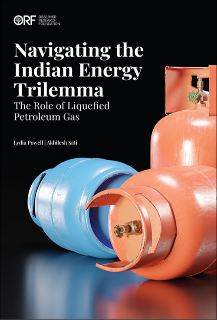
Electrolysis is a key process involved in the production of green hydrogen (GH), splitting water into hydrogen and oxygen. We have known the technology for almost two centuries, yet it has not reached mass scalability and has remained a major cost component in the production of GH.
The electrolyser is composed of the stack and the system (also called the balance of the plant). The stack is where the splitting of water takes place and the system comprises power supply, water supply, purification, and compression.
Although the principle of water electrolysis is the same across all technologies, its construction involves different physiochemical and electrochemical aspects. Based on which there are four types of technologies—Alkaline Electrolysis (AE), Proton Exchange Membrane (PEM) Electrolysis, Anion Exchange Membrane (AEM) Electrolysis, and Solid Oxide Electrolysis (SOE).
These technologies differ in the electrolyte used, temperature, the pressure of operation, and the material used in the stack. Alkaline and PEM are commercial technologies, whilst AEM and SOE are still at the lab level. The latter two technologies, however, are quite promising. There are only a few companies and original equipment manufacturers (OEMs) in Europe that are involved in their manufacturing. The table below shows the characterisation of the four types of water electrolysis.
Table 1. Characterisation of the four types of water electrolysers
| Component/Operating Condition |
Alkaline |
PEM |
Anion Exchange Membrane |
Solid Dioxide |
| Operating Temperature (Degree Celcius) |
70–90 |
50–80 |
40–60 |
700–850 |
| Operating Pressure (bar) |
1–30 |
<70 |
<35 |
1 |
| Electrolyte |
Potassium hydroxide (KOH) 5–7 molL-1 |
PFSA membranes |
DVB polymer support with
KOH or NaHCO3 1molL-1 |
Yttria-stabilized Zirconia (YSZ) |
| Bipolar Plate Cathode |
Nickel-coated stainless steel |
Platinum-coated titanium |
Nickel-coated stainless steel |
None |
| Bipolar Plate Anode |
Nickel-coated stainless steel |
Gold-coated titanium |
Nickel-coated stainless steel |
Cobalt-coated stainless steel |
Source: Green Hydrogen Cost Reduction: Scaling up Electrolysers to meet the 1.5 degrees Celcius Climate Goal, IRENA
The alkaline electrolyser is a well-established technology, operating at a pressure of 30 bar, that uses thick membranes and nickel-based electrodes. Its stack composition makes it the cheapest technology available, but its thick membranes reduce its efficiency to 70-80 percent. Whereas, PEM has higher efficiency of about 80-90 percent, operates at higher pressure, has thin membranes, and uses gold and platinum-coated titanium electrodes. The PEM’s stack components, while providing more stability and efficiency, increase its cost. The AEM and SOE have shown higher efficiency than other technologies, but their stack stability and durability are still under question.
Enabling the cost reduction
There are two components to cost reduction: the stack and the system. The system involves about 50–60% of the total cost. And in the system, about 50 percent of the cost is due to power supply, deionised water circulation, and hydrogen processing, involving 22 percent and 20 percent of the cost, respectively. These are the three significant areas that can lead to cost reduction in the balance of the plant.
Additionally, expanding the module size can lead to benefits in economies of scale resulting in cost reduction through the balance of the plant. The stack cannot accrue economies of scale by size, but its number can be increased. Multiple studies conducted showed that increasing the capacity by 10 MW will increase the cost by only 4–5.6 times. It was also shown that the largest economies of scale are reaped at the 1020 MW module.
Beyond this, any cost reduction must be achieved through innovation in the stack which entails 40-50 percent of the total cost. Innovation in stack translates to using less critical material, redesigning the stack to achieve higher efficiency, higher durability, and an increase in the current density. The most significant cost component is owed to bipolar plates/electrodes and the protective coating of bipolar plates in PEM technology and diaphragm in AE technology. There are research programmes that are going on to make cobalt and platinum-free alkaline electrolysers, and replace titanium electrodes plated with gold and platinum with other cheaper materials such as niobium, tantalum, and stainless steel. Concerning the other components of the stack, improving the efficiency in one dimension negatively affects the performance in another dimension. Thus, till now, there hasn’t been one best performing design. Therefore, replacing the expensive material with the cheaper ones alone can reduce the cost of production of the electrolyser.
Policy imperatives
As it has been reiterated many times that India has immense potential in renewable energy, its efforts to harness the same have been commendable. However, to achieve the ambitious target of producing 5 million tons per year of GH by 2030 and to become the global hub for GH, India needs to ramp up its efforts in electrolyser production. Innovation and investment in electrolyser technology are pivotal in deciding India’s future in global GH production.
To accomplish its targets of green hydrogen, government support is imperative to fund research programmes required to continue improving the existing technology and spur innovation in emerging technologies. Producing hydrogen with the cheapest available technology is still 50-60 percent more expensive than brown or black hydrogen. Thus, the government needs to take measures to improve the scale of the plants to produce competitive hydrogen. It can set manufacturing targets, tax benefits, and carbon credits, and invite public-private partnerships to mobilise more investments, creating avenues for spurring GH demand.
India must act fast and take the first mover’s advantage in electrolyser manufacturing to produce internationally competitive and commercially viable GH to become the export hub of the world, accomplish COP26 targets, and improve its energy security. India’s leadership in green hydrogen will be decided by its leadership in the electrolyser.
The views expressed above belong to the author(s). ORF research and analyses now available on Telegram! Click here to access our curated content — blogs, longforms and interviews.




 PREV
PREV


